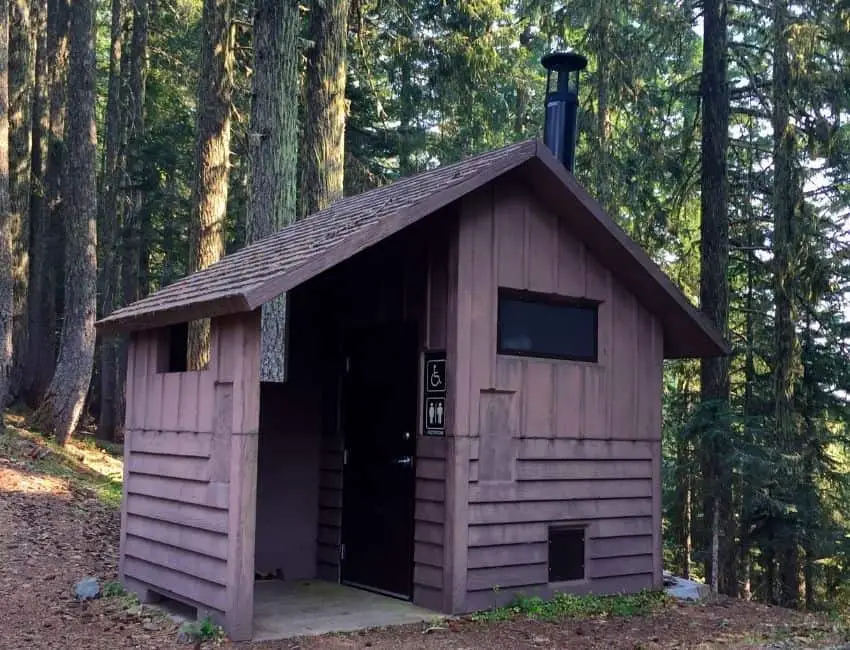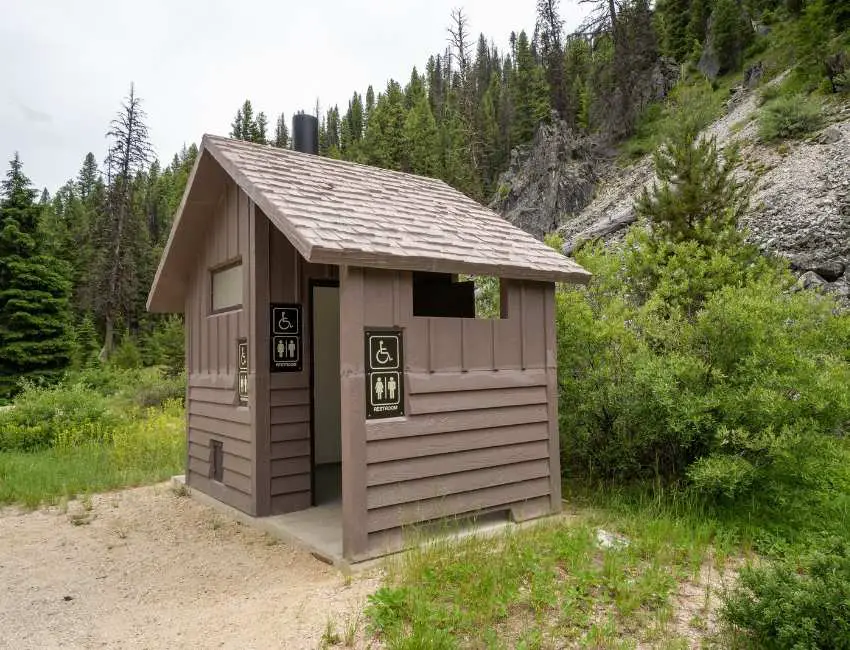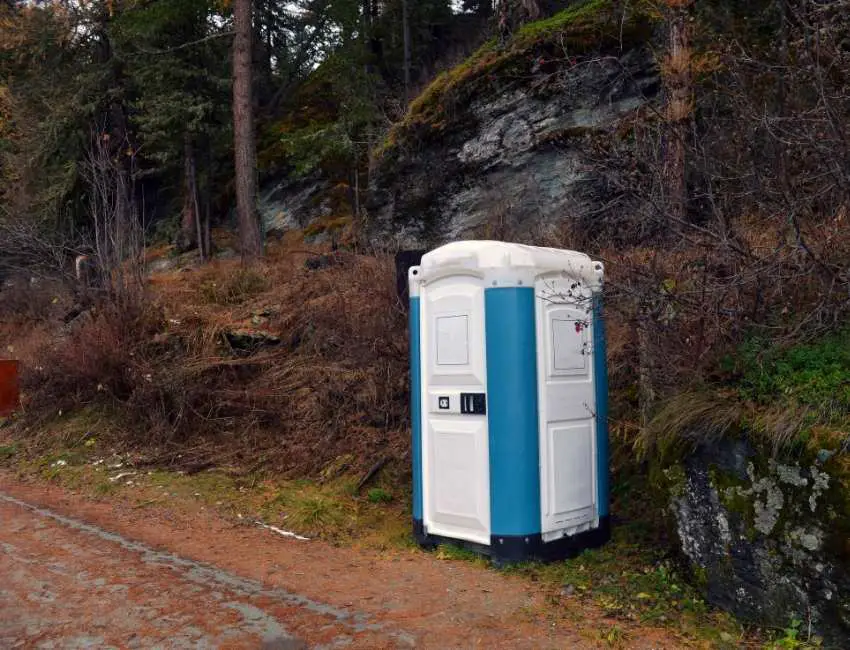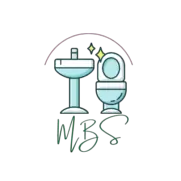Vault toilets are becoming an increasingly popular option for people who live in small spaces, public places like campgrounds, and parks, and people who want to keep the design of their bathrooms simple.
However, they do come with some risks that you should take into account before using one.
Vault toilets have many benefits, such as easier access and fewer messes on your floors than a traditional toilet bowl, but may also lead to health problems if not properly maintained or used correctly.
In this article, you will learn how to use a vault toilet and other important facts about a vault toilet.

What is a Vault Toilet?
A Vault toilet is a style of toilet that prevents the accumulation of water in the bottom. It is housed in a permanent structure and does not use water or flushing mechanisms.
Instead, it relies on a truck to pump the waste away. The typical underground tank for a vault toilet is between 750-13,000 gallons in size.
Vault toilets are usually found in remote areas where there is not enough water to flush, or the toilet does not have access to electricity.
They were created by the U.S. Forest Service as a way to reduce dependence on standard American-style toilets and have been outperforming other types of waterless toilets because they use materials that rarely crack.
Where are Vault Toilets Used?
Vault toilets are commonly found in public spaces such as parks, campgrounds, and trailheads.
They’re not as comfortable as traditional toilets, but they’re still clean enough to warrant a quick sit-down when needed. Just be prepared if you need to use one!
Vault toilets are typically built-in remote or rural areas where water and electricity may not be available. They’re designed to fit in with the natural environment, featuring a large vent pipe extending from the roof.
Do Vault Toilets Smell?
Yes, vault toilets can produce smells. The vent pipe is made of 18 diameter pipes that heat up from sunlight and create pressure to push fumes out of the toilet.
This system is designed to move smells away from the building, but on cold and damp days, it can create odors that were previously removed by the vent pipe system.
How Does a Vault Toilet Work?
A vault toilet is a unisex toilet that is designed in a typical way. It is constructed on a slope, which provides the best flow of waste. The vault toilet uses a slab and booth to sit above the slab.
The booth helps to prevent contact with the waste and also makes it easier to clean. Vault toilets are emptied on a regular basis, depending on the size of the vault and usage rate.
There are multiple ways that a vault toilet can be vented: through an exhaust pipe, into another room, or outside. A flame will burn away any odors from the vault toilet, but it needs to be periodically extinguished and replaced with new fuel.
Long underground pipes are used to transport waste far away from the vault toilet so that it doesn’t smell up your bathroom. When the toilet is full of waste, it can be converted into odorless gas.
Activated carbon can absorb foul odors and turn them into nitrogen gas-a harmless substance. The top of the vent needs to stay hot in order to force out any foul smells quickly-the warmer the air, the faster it rises!
What is the best way to use a vault toilet?

When it comes to vault toilets, there are a few do’s and don’ts that everyone should be aware of.
First and foremost, remember that these toilets are designed for waste, not trash. So please refrain from throwing away your garbage near the toilet!
There may be a few flies in the toilet, but they should not be a concern as long as proper cleanliness is maintained.
Remember: the toilet is built to handle excreta and nothing more; care needs to be taken when throwing away trash near it.
If you need to use a vault toilet, go in with your backpack. This will help keep your belongings safe while you’re using the facilities.
And make sure to lock your car before going into the toilet; if someone breaks into it, they may steal your valuables.
You can use your own toilet paper – just make sure to carry some with you just in case the vault toilets don’t have any on hand. Finally, if you’re feeling uneasy about using a vault toilet for whatever reason, why not bring along a hand sanitizer?
That way you can feel confident that you’re taking all necessary precautions for protecting yourself against germs
Pros And Cons Of Using Vault Toilet
A vault toilet is a great solution for properties that don’t have access to running water from a well or municipal source. Vault toilets don’t require running water, which can save you time and money in the long run.
However, there are some drawbacks to using this type of toilet. For example, vault toilets are a stationary option, so they can’t be moved if you need to relocate your property.
Additionally, vault toilets require more maintenance than other options.
Do Vault Toilets Flush?
No, vault toilets do not flush. As vault toilets do not use water, they don’t need to be flushed.
Pit Toilet vs A Vault Toilet
Pit toilets use a hole in the ground as their vault, while vault toilets collect waste in a container. Each type has its own set of pros and cons, which we’ll go over below.
Vault toilets are great for large groups of people, but a single person or small family might dig their own pit latrine if they don’t want to pay for a vault toilet.
On the other hand, vault toilets can handle larger waste volumes than pit latrines. However, it takes longer to release them into the environment, and they’re more expensive than pit latrines.
Pit toilets have an open hole that is lined with soil and easily emptied while vault toilets deposit waste below concrete slabs which take much longer to breach into the sewer system (and are unsafe).
Vault toilets are more permanent than pit toilets–they require proper servicing and maintenance while pit latrines may not be needed in every situation.
Vault Toilets vs Composting Toilets

When it comes to choosing between a composting toilet and a vault toilet, there are some key differences to consider.
The most obvious difference is that a composting toilet produces an end product, while a vault toilet does not.
Composting toilets also need to be used by a certain number of people in order for the waste to decompose properly, while vault toilets can be used by any number of people.
Additionally, composting toilets are typically portable, while vault toilets are more permanent fixtures. Finally, composting toilets tend to be narrower in width than vault toilets.
Vault Toilets vs Septic Tank
Septic tanks have been around for a long time and are still a popular option for many homeowners. However, in recent years vault toilets have become more prevalent as people learn about their benefits.
Here is a look at some of the key differences between these two types of toilets:
Vault toilets are built on the ground and do not have running water, while septic tanks are constructed on top of people’s homes and do have running water. This is one of the main reasons why septic tanks tend to be more expensive – they require extra infrastructure to be installed.
Another key difference is that septic tanks have scum separation mechanisms, while vault toilets don’t.
This means that the solid waste settles at the bottom of the tank in a septic system, while the liquid waste flows through pipes. The top layers of grease will build up on the bottom of the tank as bacteria process it.
Septic tanks also produce bad odors if they are full and not properly maintained, but this usually only happens if owners aren’t keeping an eye on things.
If this occurs, wastewater can back up through toilets or other fixtures in a house. By contrast, vault toilets generally don’t produce any bad smells unless there is a blockage.
Finally, septic tanks need to be pumped out on a regular basis in order to function properly, while vault toilets do not.
This is because the waste in a septic tank is broken down by bacteria, and when this process is interrupted it can cause some nasty smells. As you can see, there are several key differences between these two types of toilets.
Vault Toilets vs Porta Potty

Portable camping toilets are best for groups of 2 or 3 people. They are convenient and portable, making them perfect for short-term needs. However, they do not work well for larger groups or long-term needs.
Vault toilets require more space, but they aren’t as concerned with convenience and portability. They are better suited for larger groups or longer-term needs. Vault toilets also offer a more sanitary experience as they are dry toilets and do not need any water to flush.
Porta Potties are flush toilets while Vault Toilets are not. Porta Potty has a smaller holding tank and requires water to flush, while Vault Toilets do not need any water to flush. This makes them less convenient but more sanitary options for your next outdoor gathering!
How to Build a Vault Toilet
There are many things to consider when building a vault toilet.
- For one, you will need to mark out the vault and the building separately.
- You will also need to compact the film under the footing form box and position the box.
- Then, grade the hole, compact, and position the rebar.
- Finally, set up the tank so that it is level at grade.
- Now, fill it with water before backfilling around it with concrete. Be sure to prepare for the slab by pouring concrete into the footing form box and filling around the tank with concrete.
- Do final grading for slab and set doorframe supports.
- Set poly floor pan for restroom structure and position rebar in perimeter footings of the final slab.
- Finally, pour the final slab and make sure you mask off with plastic to prevent unwanted rain from entering the building at this point of the construction process
Final Thought
So, there you have it! Everything you need to know about using vault toilets. They can be a bit tricky to find and use, but with a little caution and common sense, you’ll be able to navigate them like a pro.
Just remember to always bring your own toilet paper and hand sanitizer or water, and don’t leave anything behind when you’re done. And if all else fails, just ask a park ranger for help–they should be more than happy to show you the way around one of these unique public toilets.
